Table 33.1 along with their effectiveness in preventing pregnancy. While barrier methods, abstinence and the rhythm method can be used safely in the setting of any medical illness, these methods are less effective than hormonal methods and intrauterine devices. Their relative safety needs to be weighed carefully against the associated risks of an undesired pregnancy in a woman with significant medical disease. While tubal ligation and vasectomy are highly effective options for which the only medical risk is that of the procedure, their permanent nature makes them undesirable for many couples. It is the highly effective and reversible nature of hormonal contraception and intrauterine devices that makes these options so desirable for women with medical problems. However, both the clinician and the patient can be overwhelmed by the long list of cautionary statements and recommendations related to the use of these options in these same women. Table 33.2 is therefore provided to offer some helpful guidance to the clinician caring for women with medical illness during their reproductive years. It is based on the guidelines developed by the World Health Organization (WHO) in 2009.
Table 33.1 Efficacy of various methods of contraception
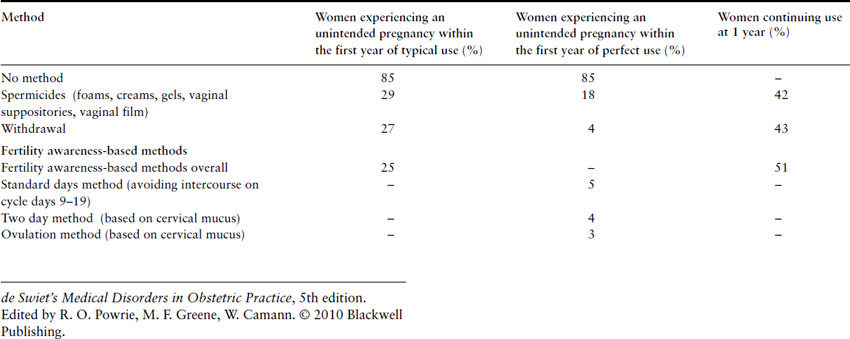
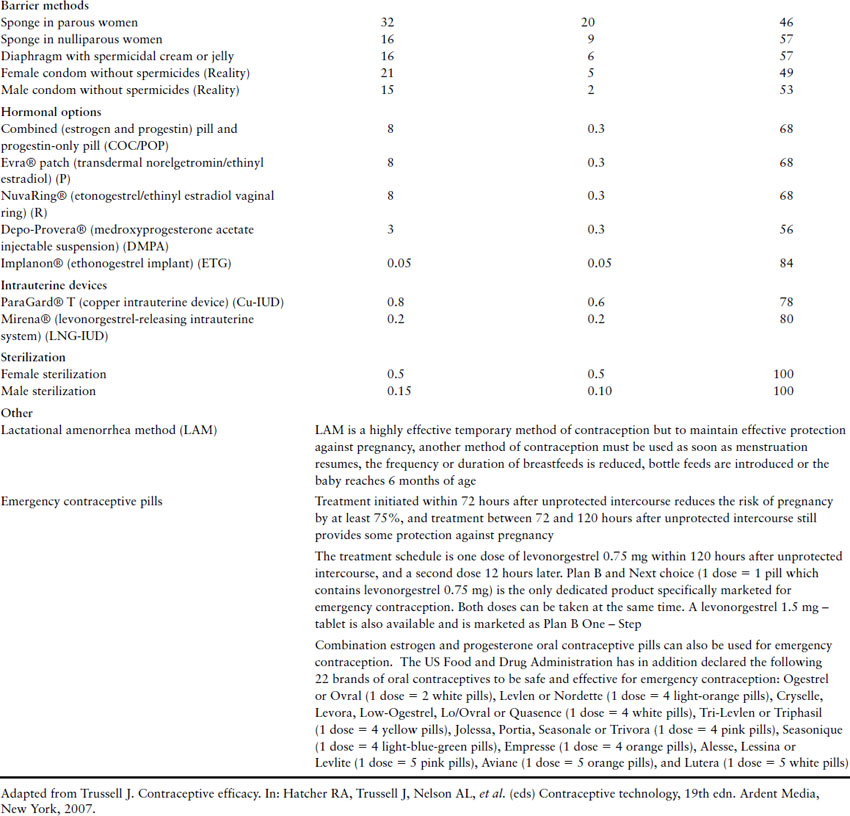
Table 33.2 WHO recommendations for contraceptive use in women with medical problems
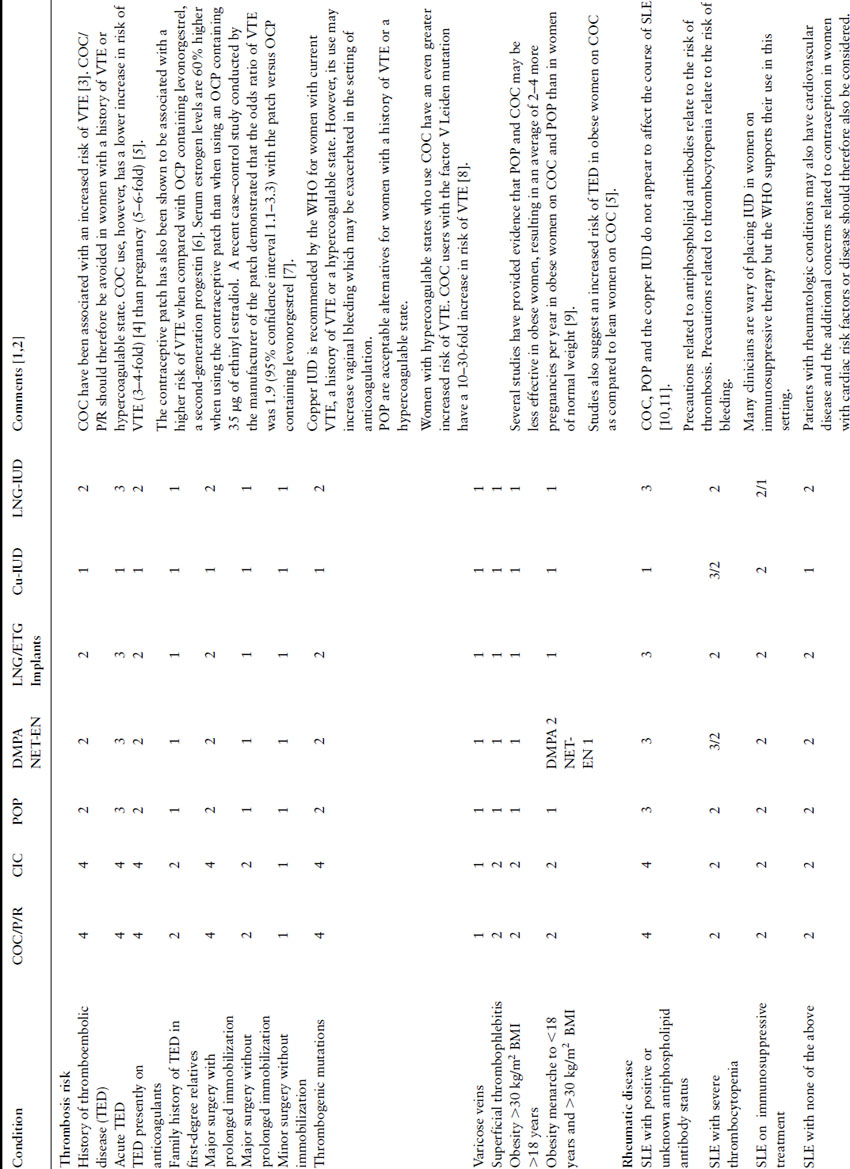
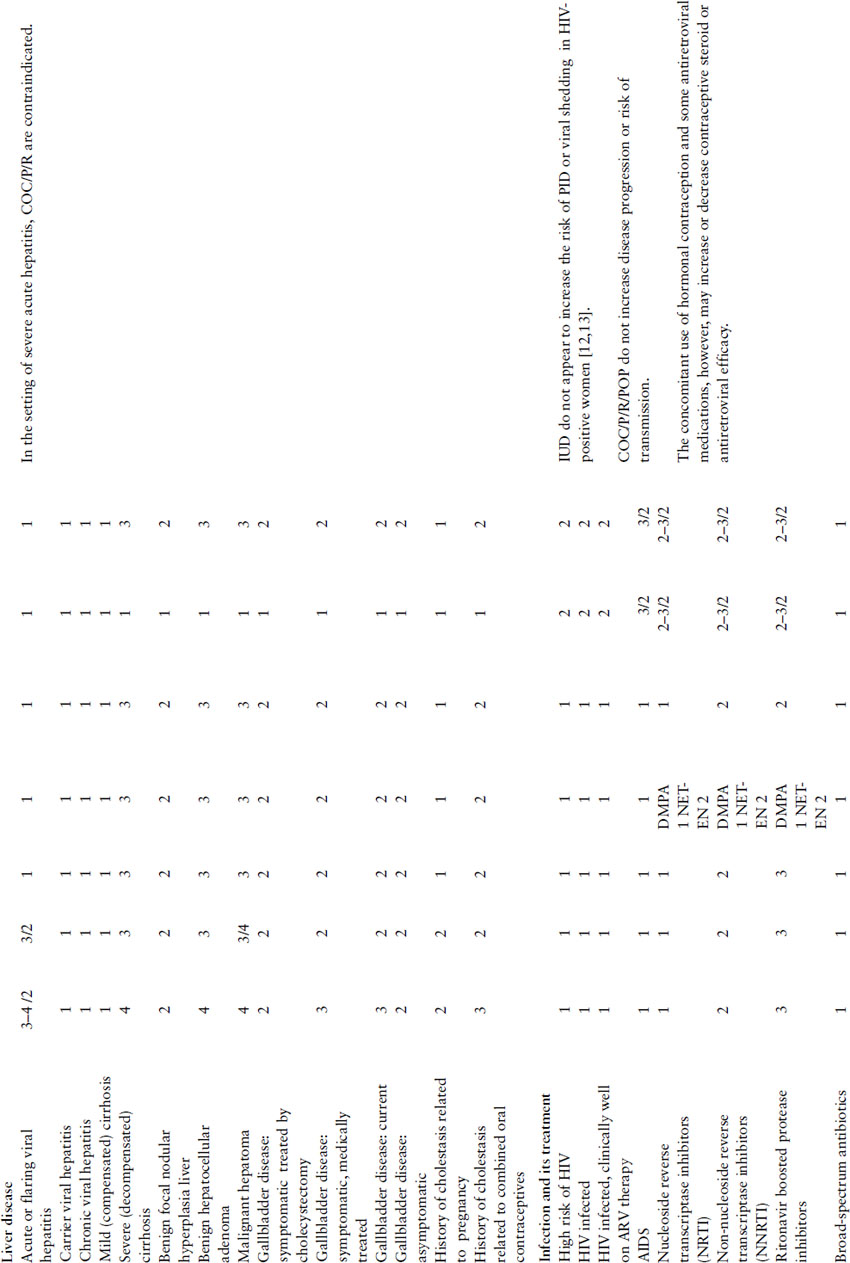
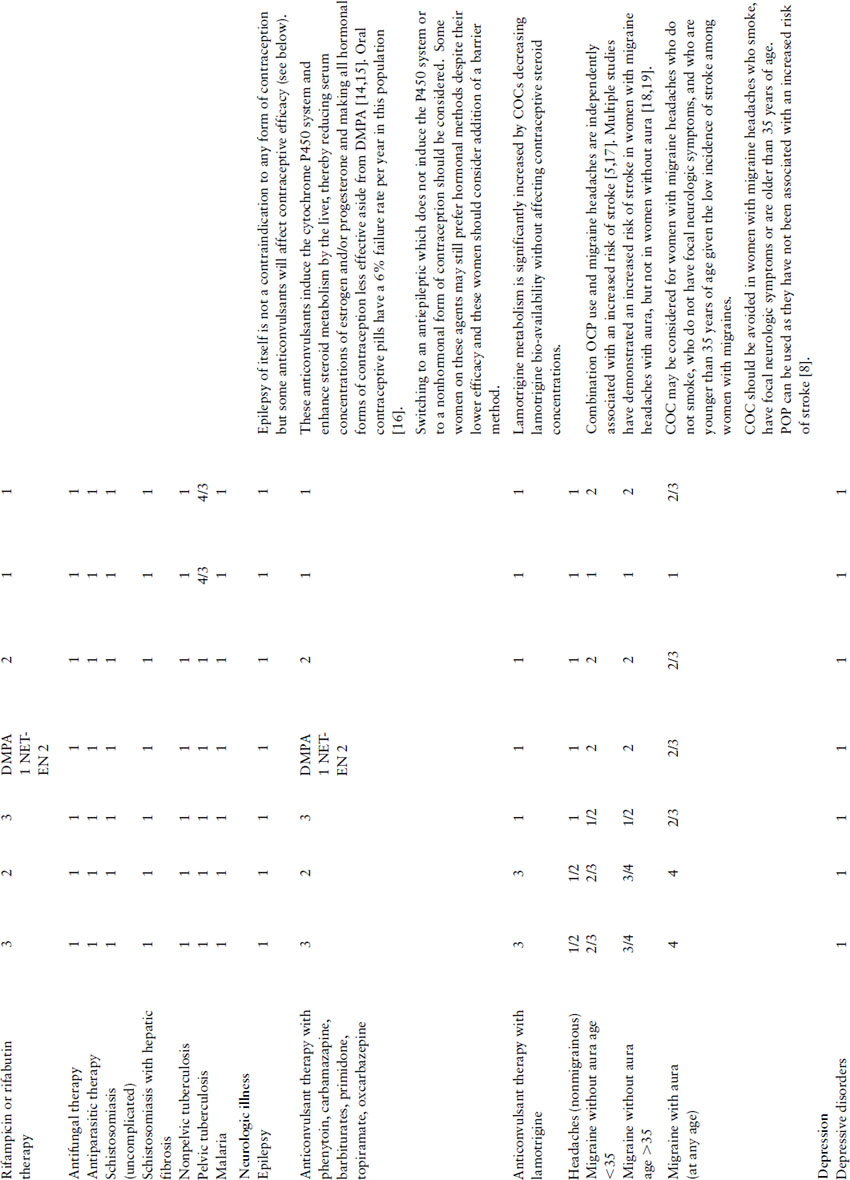
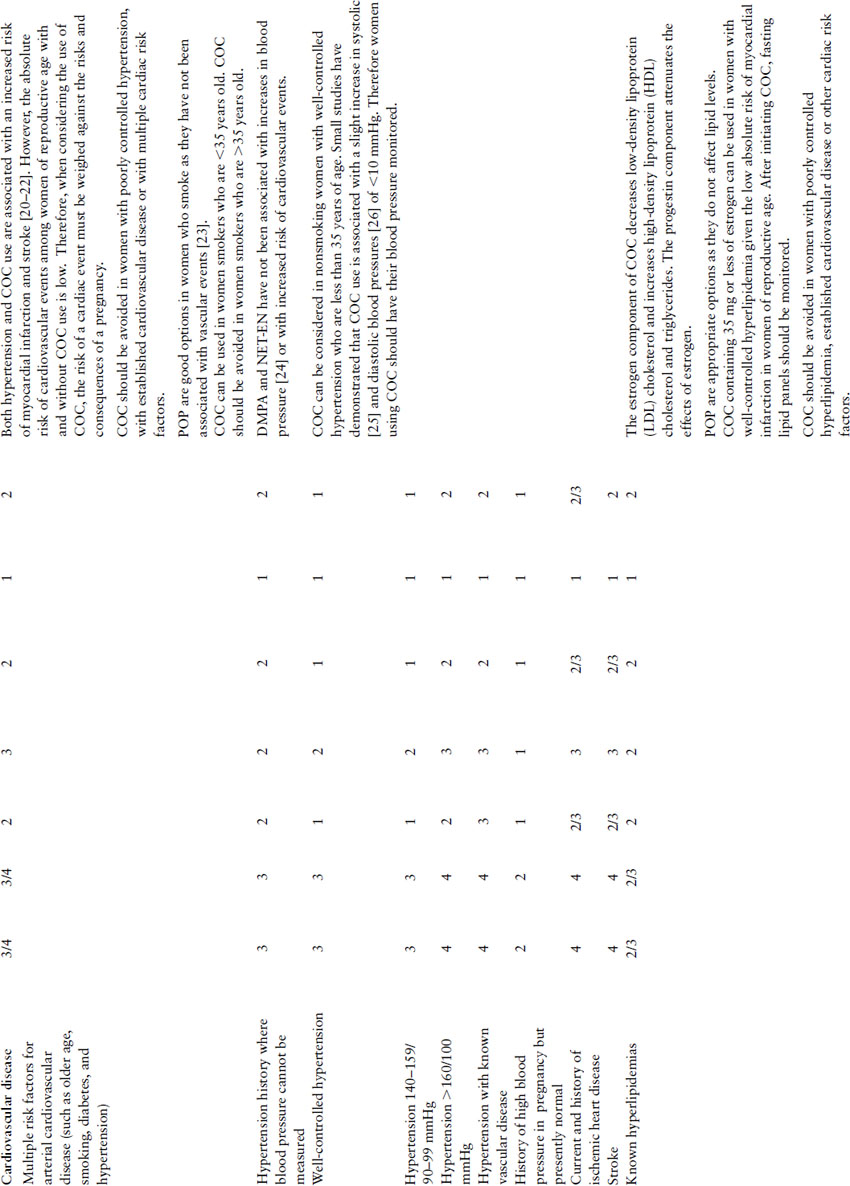
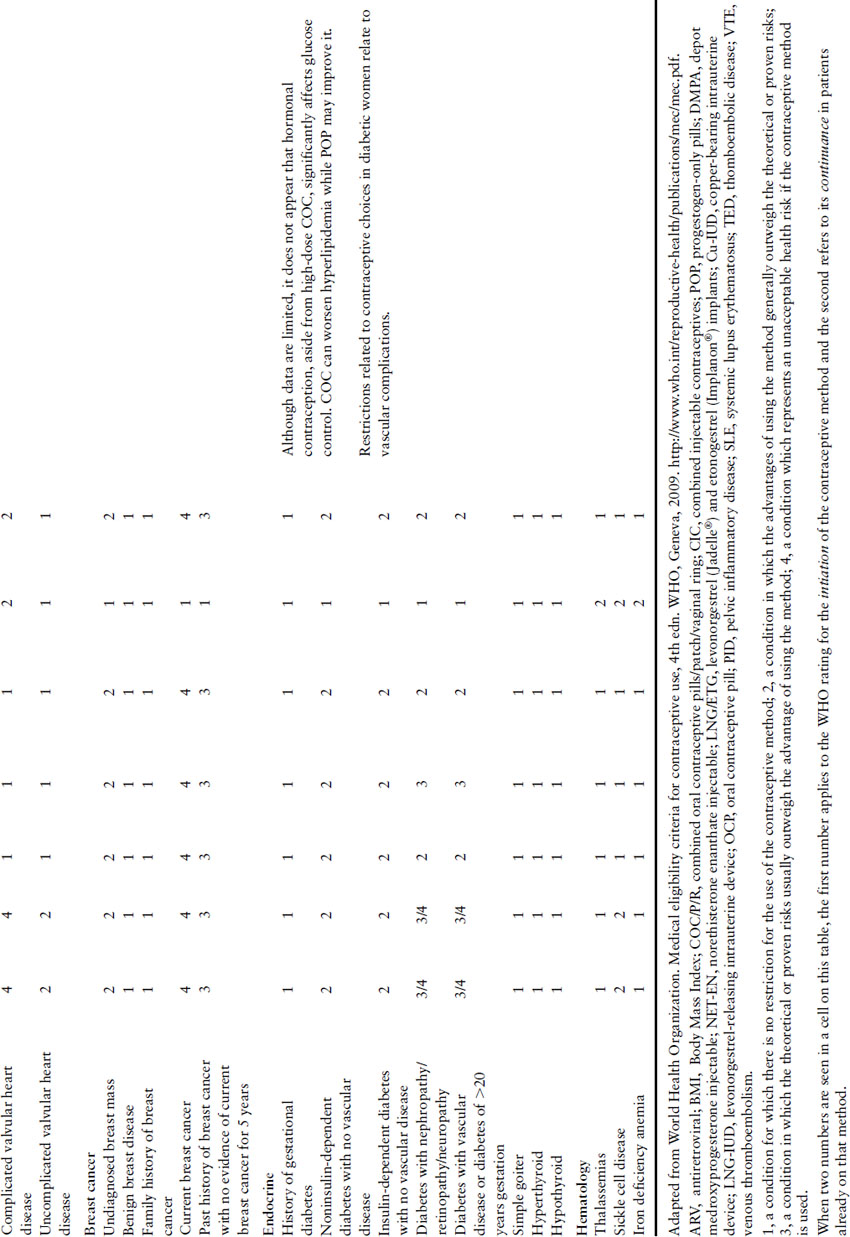
Stay updated, free articles. Join our Telegram channel

Full access? Get Clinical Tree


